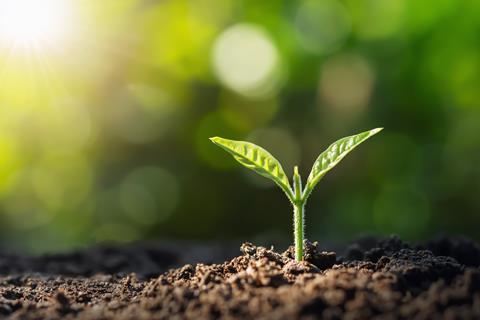Soil disinfection method helps organic growers control soilborne diseases, the seed company explains
Seed specialist Rijk Zwaan has highlighted the effectiveness of biosolarisation, a soil disinfection method that it has said is ”very effective and fairly easy to implement”.

Organic vegetable growers in Spain have been using the natural method to suppress soilborne diseases for many years, it noted.
Four weeks of sunshine and high temperatures are a prerequisite for successful biosolarisation, meaning the approach could be interesting for organic growers in other Mediterranean climates.
The chemical-free soil disinfection method is widely used in Spain, according to Aureliano Cerezuela Márquez, crop specialist at Rijk Zwaan Spain.
“It has been applied for quite some time in the region of Murcia, especially in greenhouses for sweet pepper cultivation,” he said. ”In organic farming, the use of rootstocks in combination with biosolarisation is most effective for the control of soil pathogens.”
After cultivating crops such as tomatoes, peppers, cucumbers, peppers or melons, the growers first shred the plant residues and work them back into the soil, often mixed with fresh sheep or poultry manure, Márquez explained, before solarising the soil.
This whole process, performed prior to planting or sowing the next crop, is called biosolarisation.
According to the group, scientific research showed that biosolarisation could help growers suppress various soilborne diseases.
For example, the approach reportedly proved to be the best alternative for controlling Phytophthora capsici, P. parasitica and Meloidogyne incognita in pepper cultivation, while trials in tomato and cucumber greenhouses showed similar results.
Factsheets from Best4Soil, a European ‘community of practice’ network, demonstrated some of the issues growers could control with the method.
These included soil fatigue, root-knot nematodes, Phytophthora parasitica, Fusarium solani f. sp. cucurbitae and Fusarium oxysporum f. sp. radicis-cucumerinum.
Sufficient sunlight was the primary prerequisite for successful biosolarisation, Best4Soil confirmed.
“The method is effective between June and August,” a Best4Soil factsheet outlined. ”At least four weeks of sunshine and high temperatures are needed.
”At the beginning of the solarisation process, it is especially important that several days of continuous sunshine occur.
”The temperature in the first soil layer has to be raised as fast as possible to kill weed seeds,” the factsheet continued. ”Otherwise, weeds will grow and push the plastic film upwards, thereby strongly reducing the warming effect of solar radiation on the soil.”
Besides a period of sufficient sunlight, growers have to moisten the soil and cover it well with a transparent plastic film.
This ensures that the temperature in the top 20cm layer of soil reaches 45°C, which kills soil nematodes and fungi in a process is similar to pasteurisation, according to Best4Soil.
Adding fresh organic matter – whether plant-crop residues, green manures or fresh animal manure – enhances the solarisation effect and also improves the fertility of the soil.
”Growers in warm regions are increasingly adopting this method thanks to its effectiveness for disease control plus its soil health benefits,” Rijk Zwaan stated.
”But what about growers in temperate climates? Other options are open to them.
”Both inundation/flooding, and anaerobic soil disinfection (ASD) – green manures or fresh organic matter covered with a suitable film, in combination with flooding – do the same,” the group outlined.
”In cooler regions, these have proved to be effective chemical-free methods to ‘reset’ the soil,” Rijk Zwaan added. “Like biosolarisation, both of these methods deoxygenate the soil and kill off certain harmful nematodes.”



